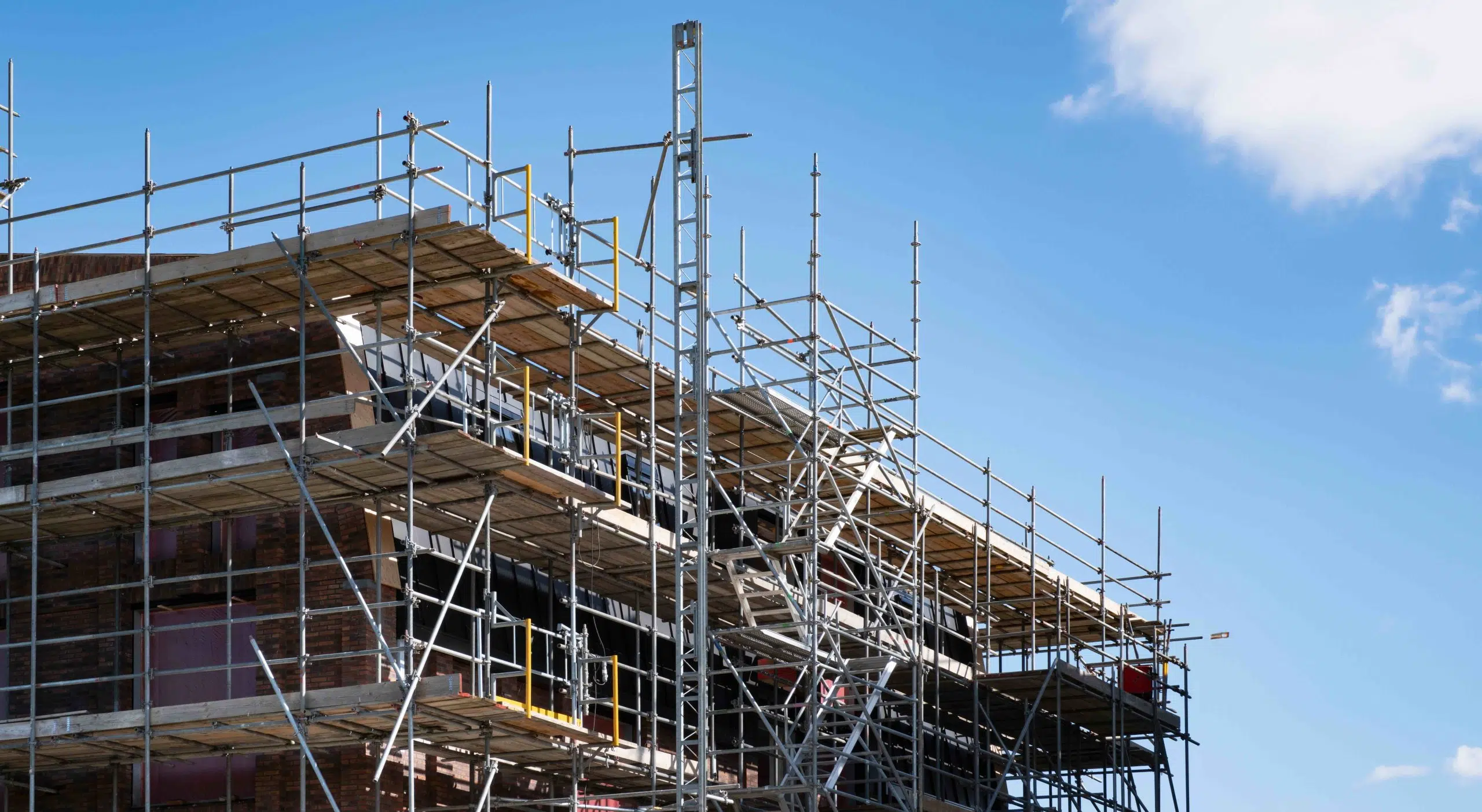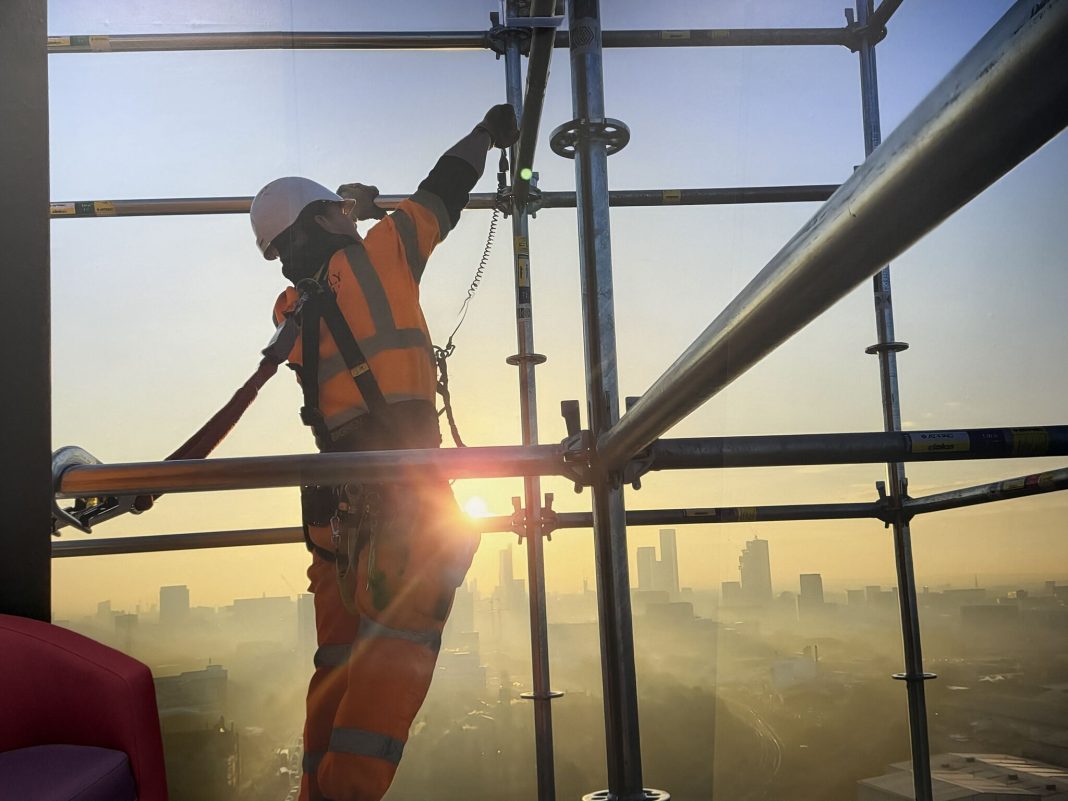Extreme weather is exposing poor practices across the scaffolding industry, as insurance specialists urge contractors to tighten safety procedures in response to increasingly severe storms.
McCarron Coates, a commercial insurance broker specialising in scaffolding and roofing, has warned that recent high winds are revealing dangerous shortcuts and inadequate planning on sites across the UK.
Storm Amy brought 81mph gusts to parts of Britain in early October, and with more named storms expected throughout autumn and winter, the firm says contractors can no longer afford to cut corners.
“High winds, sometimes at speeds beyond those experienced in some parts of the UK in the past, are now an ever-present part of our lives under climate change conditions,” said Luigi Maggio, director at McCarron Coates. “There is nowhere to hide, if wind exposes a scaffolder’s work.”
The broker points out that properly designed, constructed and inspected scaffolding should withstand even the highest winds. When structures fail in extreme weather, it typically indicates problems in the design and construction process rather than the storm itself being to blame.
Failures can lead to multiple types of insurance claims: injuries from scaffold collapse, property damage from falling structures, and professional negligence suits against designers.
Whilst public liability, employer’s liability and professional indemnity insurance should cover such incidents, McCarron Coates warns that evidence of negligence could result in claims being denied. Contractors also risk prosecution by the Health and Safety Executive.
The HSE advises that no scaffolding work should be carried out when winds exceed 23mph (Force 5), as these conditions affect balance and heighten fall risk. For single-point systems, even greater caution is recommended, with a 20mph threshold advised.
Common shortcuts that extreme weather can expose include mixing components from different manufacturers, failing to follow assembly guidelines, inadequate checks of mudsill anchorage or scaffold Ties, and using damaged components, such as cracked boards or rusted elements. Poor safety culture, where workers aren’t encouraged to report concerns, compounds these problems.
Planning and design failures present particular risks. Strength and stability calculations must be completed for any scaffolding that doesn’t conform to recognised standard configurations. Complex designs require competent persons to draw up assembly, use and dismantling plans, with documentation available to all workers on the project.
Foundation-level checks are frequently overlooked, according to McCarron Coates. Ground conditions, particularly areas with drains or rain-softened soil, may not support the weight of scaffolding structures. Similarly, attaching sheeting or netting to scaffolds not designed for these additions creates instability. Even when designs allow for sheeting, it must be fitted to become sacrificial in high winds, preventing suction forces from toppling the entire structure.
The firm emphasises that compliance with NASC’s TG20 guidance is essential for structures to withstand severe weather. The guidance enables contractors to determine maximum safe heights and proper configurations for scaffolding, sheeting and debris netting.
Post-storm inspections are equally critical. Following each weather event, competent persons must reinspect scaffolding structures, complete written reports, and implement corrective actions immediately.




